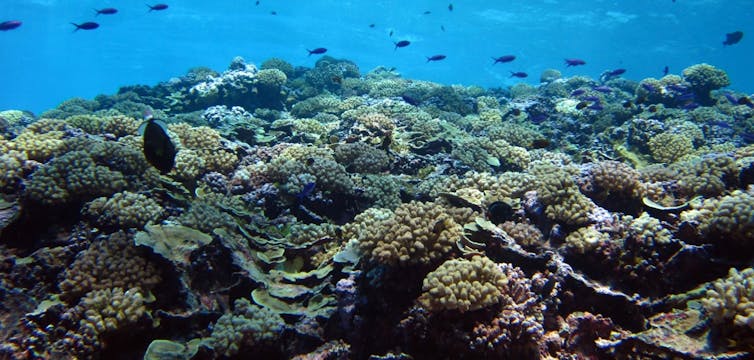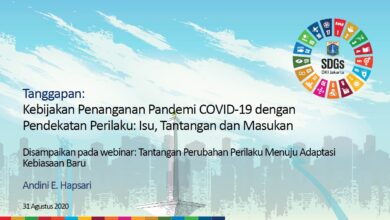
From climate change to omnipresent plastic waste, 2019 delivered a lot of discouraging environmental news. Several special reports this year from the Intergovernmental Panel on Climate Change documented how global warming is altering the planet’s lands, forests, oceans and frozen regions.
Another U.N. report warned that the Earth is losing species at an alarming rate, with around 1 million animal and plant species facing extinction. Key causes include changes in land use, such as clearing forests for agriculture; unsustainable fishing rates; climate change; pollution; and the spread of invasive species.
Governments may seem unable or unwilling to confront these challenges, but scholars are proposing innovative solutions. Here are three articles that we published this year that put forth responses to urgent environmental challenges.
1. Cooling the planet and saving species
Climate change and biodiversity loss are interconnected problems that together can seem overwhelming. But in a study published in April, 18 scientists proposed a “Global Deal for Nature” that can help avert both catastrophic climate change and mass extinction.
The plan identifies about a thousand “ecoregions” on land and sea that each contain unique ensembles of species and ecosystems, and also help curb climate change by storing carbon.
“Our plan would require a budget of some US$100 billion per year. This may sound like a lot, but for comparison, Silicon Valley companies earned nearly $60 billion in 2017 just from selling apps,” Arizona State University conservation scientist Greg Asner, a co-author of the report, wrote for The Conversation. “Today, however, our global society is spending less than a tenth of that amount to save Earth’s biodiversity.”

“Forests, grasslands, peatlands, mangroves and a few other types of ecosystems pull the most carbon from the air per acre of land,” Asner notes. “Protecting and expanding their range is far more scalable and far less expensive than engineering the climate to slow the pace of warming. And there is no time to lose.”
2. Stemming the tide of plastic trash
Global markets for scrap material, including recyclables, have been in turmoil since early 2018, when China – which was importing a large share of the world’s scrap – shut that window almost completely. This year other Asian countries followed suit, saying they would no longer accept materials they were ill-equipped to handle.
These shocks have left U.S. scrap dealers searching for markets. Many are sending plastics – the hardest materials to recycle – to landfills.
Alarmed by these developments and the growing scale of plastic waste, many communities and businesses are intensifying the search for new solutions.
Recycling authorities have launched public education campaigns, and investment in recycling infrastructure is on the rise,” reports Kate O’Neill, professor of global environmental politics at the University of California, Berkeley. “There is palpable energy at trade meetings around improving options for plastics recycling. Chinese companies are investing in U.S. pulp and paper recycling plants, and may extend into plastics.”
This process won’t be quick, since it also requires action at the global level to connect national policies. And reducing production and use of plastic remains key. “But as one Asian country after another shuts the door on scrap exports, it is becoming increasingly clear that business as usual will not solve the plastic pollution challenge,” O’Neill writes.
3. A new New Deal for US farmers
Severe weather, corporate consolidation in agriculture and a trade war with China put heavy pressure on U.S. farmers in 2019. Farm bankruptcies are at historic highs, and many experts wonder where the next generation of farmers will come from.
Social scientists Maywa Montenegro of the University of California, Davis, Annie Shattuck of Indiana University and Joshua Sbicca of Colorado State University see this convergence as an economic, environmental and social crisis for farming communities. In response they propose a “just transition” to a system that cuts carbon emissions from agriculture, makes farmers less vulnerable to the effects of climate change and delivers economic justice to rural communities.
“Two elements are essential: Agriculture based in principles of ecology, and economic policies that end overproduction of cheap food and reestablish fair prices for farmers,” they assert.
To picture what such a transition would look like, they point to New Deal agriculture policies adopted in the 1930s that directed public investments to rural communities, set price floors for crops and paid farmers to adopt conservation policies. This system was largely scrapped after World War II in favor of rules that promoted large-scale commodity production and maximized output. Today, the authors argue, farmers are locked into an economic model that is “unsustainable for farmers, eaters and the planet.”
But in political and agricultural circles, new proposals are emerging for reducing corporate power in agriculture and restoring parity for farmers – payment that reflects production costs. Redirecting an industry this large is a long, slow process, but Montenegro, Shattuck and Sbicca assert that “if policymakers can envision a contemporary version of ideas in the original New Deal, a climate-friendly and socially just American agriculture is within reach.”
Artikel ini telah tayang di theconversation.com dengan judul “Finding opportunity in crisis: 3 essential reads about environmental solutions”, https://theconversation.com/finding-opportunity-in-crisis-3-essential-reads-about-environmental-solutions-129119
Penulis : Environment + Energy Editor, The Conversation
Foto cover : Big challenges call for big responses. Brian S./Shutterstock.com





